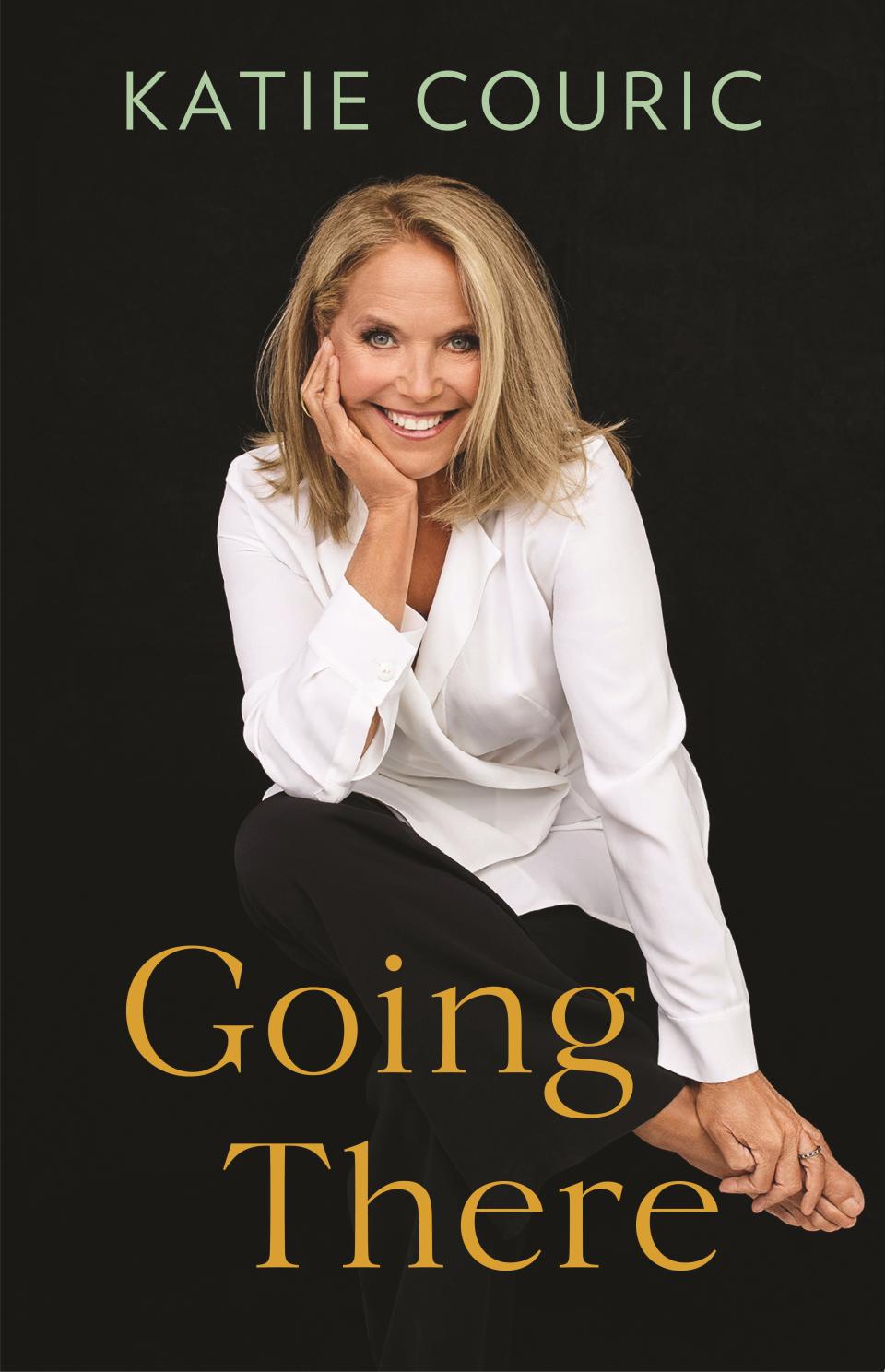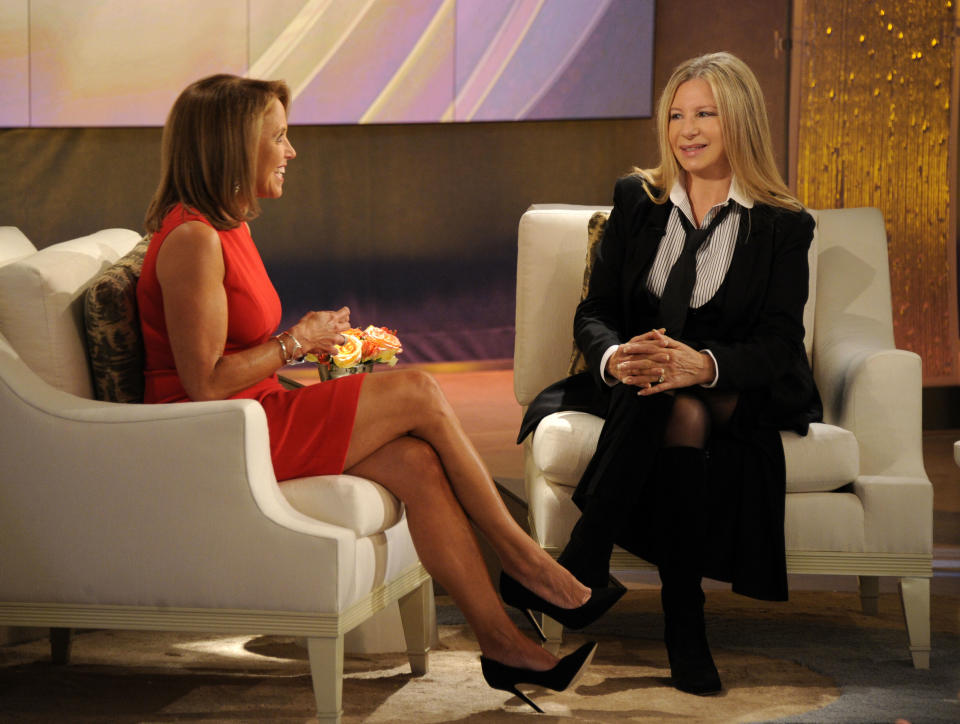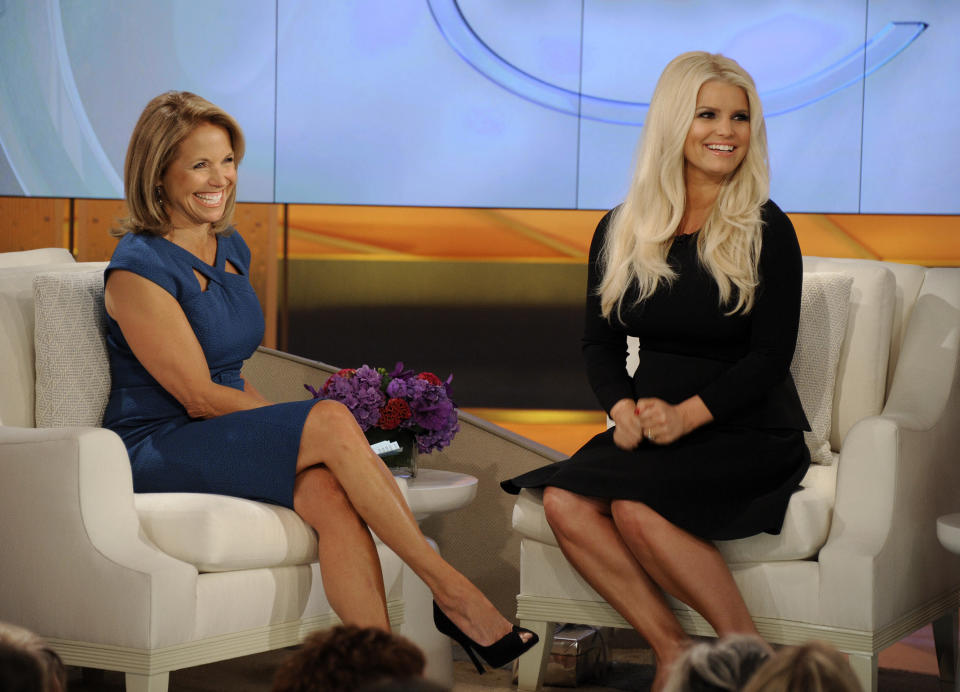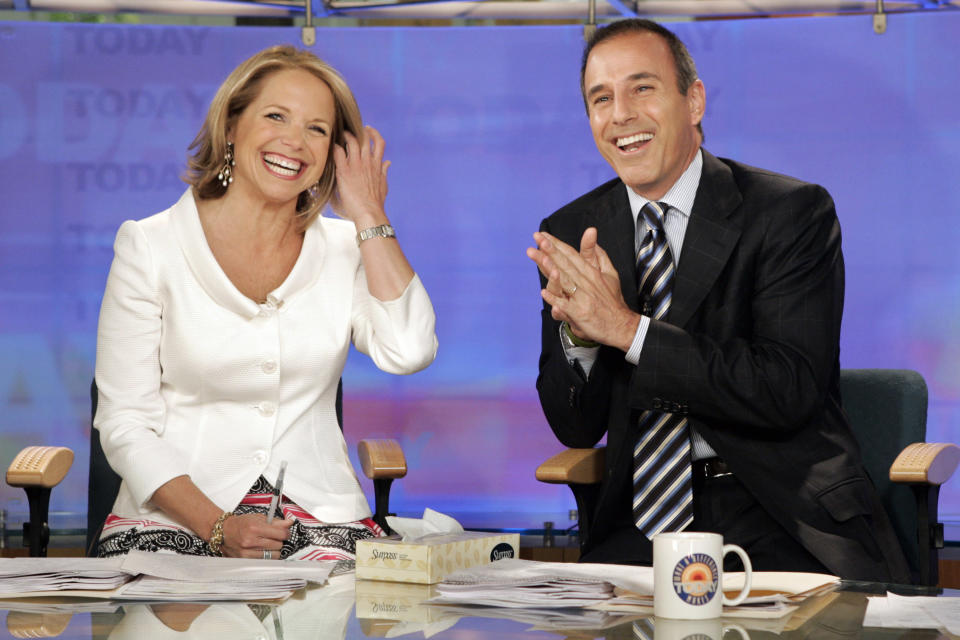Media People: Katie Couric Likes to Share — A Lot

Katie Couric’s memoir, “Going There” (Little, Brown and Company) is a revealing portrait of one of the most powerful women in media at a time when it seemed like women were beginning to finally achieve a measure of equality with their male colleagues. Except that they actually weren’t. And as the tabloid coverage of her book makes clear, they still aren’t.
Weeks before the book’s publication, The New York Post and the Daily Mail began rolling out excerpts from the book — without context — in which Couric appears to write dismissively of other women, including Deborah Norville and Ashleigh Banfield. Statements expressing hurt from both women followed. And the narrative that “Going There” as a bridge-burning, mean girl tome was cemented.
More from WWD
“I was surprised because it really bears no resemblance to what I wrote,” Couric said in an interview. “But the cat-fight narrative is a tale as old as time. And I think if you can promote that narrative, you’re going to get more clicks than you might with a more accurate narrative.”
The narrative that has dogged Couric — and almost every other powerful woman of her generation. She points out that she got the job on “Today” because Dick Ebersol, then running NBC, “thought Jane Pauley at 39 was too old.” This set up a messy transition to Norville, who was arguably sabotaged by co-anchor Bryant Gumbel, who made no effort to hide his displeasure with his new co-host. The “Today” show sank in the ratings. Couric, then a Washington correspondent, was called up to fill in while Norville was on maternity leave. Her easy self-deprecation and sly humor were immediately evident. So was her simpatico with Gumbel. She got the job in April 1991. The lead of The Baltimore Sun story reporting on the transition from Norville to Couric put it this way: “The girl next door is back, and ambitious Eve is gone.”

Courtesy Photo
Reflexive sexism was everywhere. But Couric was tougher than she may have appeared. When she was offered the “Today” show seat next to Gumbel, she insisted that the hosts split interviews 50/50. She would have to settle for 49/51, she writes. By that time, she seems to have absorbed the lessons of objectification. She writes about being a young staffer at CNN when an executive announced in front of a conference room of colleagues that Couric got her job “because of her determination, hard work, intelligence, and breast size.” She was mortified and humiliated. But she wrote the unnamed executive a memo demanding an apology, which he provided. She recounts being lunged at by Larry King — more than two decades her senior — after a dinner date. And being serenaded as a twentysomething ABC News desk assistant by Sam Donaldson, who leaped on top of a desk to belt out the first verse of “K-K-K-Katy, beautiful Katy.”
She also writes about her struggles with body image, which led to a yearslong battle with bulimia throughout her twenties. She would chug baking soda and water to induce vomiting. “Starve, cheat, binge, purge — the cycle would take years to break,” she writes.
The book opens with an anecdote about her skin turning orange owing to eating too many carrots, which was apparently prescribed by the famed Scarsdale diet. And she admits that in her family, “dieting was a way of life.” Her mother and sister would subsist on “cottage cheese and Tab”; she would receive letters at camp from her mother warning Couric to watch her diet. Years later, Couric would elect to have breast reduction surgery. (The surgeon, she writes, commenting on her fibrocystic breasts, told her it was “like cutting through concrete.”)
“Someone told me the book was very self-aware, and I thought that was the highest compliment,” she said during a recent Zoom call. “I didn’t see the point of writing something that wasn’t honest and revealing.

AP Photo/Disney-ABC Domestic Television, Ida Mae Astute
“I didn’t want to do one of these victory laps of greatest hits. To me, it’s a look back on a particular period of time and a particular woman’s experiences. I think there are a lot of useful life lessons in it about how I dealt with stuff. And hopefully it gives people a lot to think about in their own lives.”
Couric will further explore some of these themes on her nine-stop promotional tour which is less traditional book tour than a series of discussions with her famous friends and contacts. It kicks off Oct. 28 in Boston with “Queer Eye’s” Tan France. There are stops in New York with “SNL’s” Melissa Villaseñor and Chloe Fineman, Chicago with Chance the Rapper, San Francisco with Leslie Jordan and Nashville with Brad and Kimberly Paisley.
“I didn’t want to spend 90 minutes talking about myself,” she said. “I couldn’t think of anything more boring than that. This is a chance for me to be in conversation with smart, substantive people who can talk about the state of the world in a really interesting way. I thought if I could use this as an opportunity to do a societal gut check and talk about some of the things that are percolating in the culture, it would be interesting, illuminating and elevating for an audience.”
One of the through narratives of her memoir is the ways in which women internalize the gendered conventions forced onto them by society. And Couric spends plenty of time dismantling the notion that she was anything like the perky “Today” co-host she played on TV for 15 years. After a long and successful career at NBC News, an unhappy but lucrative stint at CBS News, and a short-lived talk show at ABC, she has amassed a fortune and the freedom to launch her own production company. She writes as someone who has nothing else to prove, and no longer cares about being liked. “I’m in a position where I have the freedom to be honest,” she said.
But there will likely be former colleagues who will disagree about whether she has taken enough responsibility for her own role in the hyper-competitive toxicity of TV news.
“It’s a very competitive industry, and men are very competitive, too. And I use the example in the book of [ABC News anchors] David Muir and George Stephanopoulos vying over who got to do special reports that had to be brokered apparently by [Disney chairman and chief executive officer] Bob Iger flying in. And yet, that barely gets a mention because it just doesn’t fit into the sexist trope of the cat-fight narrative. And I think, how can we be both competitive, which I think is a requirement to excel, but also supportive? I was so supportive of so many women throughout my career, but because I [wrote] that sometimes I felt like, ‘Oh no, is she going to take my job?’ — that that is the overriding narrative is completely inaccurate.”

AP Photo/Disney-ABC Domestic Television, Ida Mae Astute
The near universal public adoration began to curdle during Couric’s final seasons on “Today,” and it would continue at CBS News, where as the new anchor of “CBS Evening News” and “60 Minutes” correspondent, she was the target of seemingly endless press speculation about her alleged diva-like demands. She writes about how a request for a much-needed renovation of the women’s rooms at the network’s West 57th Street headquarters in Manhattan and her office over the newsroom (in shades of white and cream) were employed by the tabloids as sexist cudgels. She aims much ire at “60 Minutes” executive producer Jeff Fager, whom she calls “d–k.” She still does not understand why he refused to air her infamous Sarah Palin interview on “60 Minutes.”
“It was incredibly perplexing,” she said.
And she carefully navigates the toppling of her longtime “Today” colleague Matt Lauer. She was in Los Angeles on Nov. 29, 2017 when “Today” co-hosts Savannah Guthrie and Hoda Kotb opened the show with the bombshell news that Lauer had been fired amid sexual misconduct revelations. She recalls her phone blowing up in the wee hours as text messages from prominent women — including Kara Swisher, Norah O’Donnell and Megyn Kelly — kept her phone buzzing. And she reprints many text exchanges between herself and Lauer from the days and weeks after he was fired and as lurid details were dripping out. “By this point it seemed clear that Matt had done some terrible things,” she writes. “And yet…it felt so heartless to abandon him, someone who’d been by my side, literally, for so many years.”
She recalls a meeting with then-NBC News chief Andy Lack who told Couric that firing Lauer “was one of the hardest things I’ve ever had to do,” before quipping, “Matt’s gone from hero to zero literally overnight.”
Since then she’s had a handful of awkward run-ins with Lauer, including in January 2019 at David Zaslav’s birthday party at the Palm restaurant in East Hampton. She has not spoken to Lauer since and she does not think she will ever speak to him again. Asked if she thinks he’ll get in touch now, she said, “I don’t imagine I’ll hear from Matt.”

AP Photo/Richard Drew
The #MeToo movement has exposed a system of retrograde misogyny that enabled abuse. But it has also put women in the position to have to answer for the men in their orbit. “Why is that?” said Couric. “Why were we somehow enablers? And why aren’t men being asked these hard questions? Why aren’t men asking themselves these hard questions?”
Couric has more stories to share. Some of the outtakes, like her last interview with John F. Kennedy, Jr., and her experiences covering Hurricane Katrina, will go on her website. But many will likely remain hidden from public consumption, at least for now.
“When I first handed in the draft, it was over 100,000 words over,” she said. “My husband was like, ‘Who do you think you are, Winston Churchill?’ I said, ‘I can’t help it, I’ve seen a lot, I’ve done a lot.’ And obviously I like to share a lot.”
Sign up for WWD's Newsletter. For the latest news, follow us on Twitter, Facebook, and Instagram.

 Yahoo Movies
Yahoo Movies 
